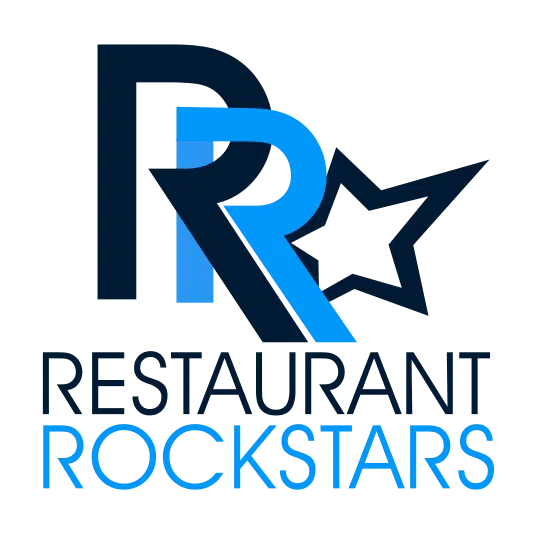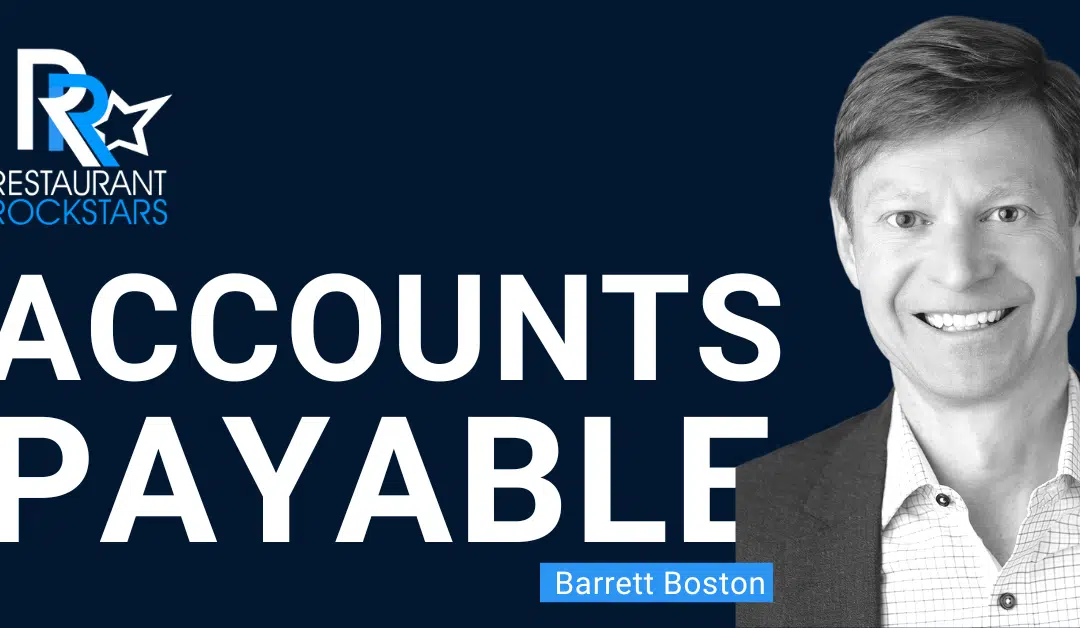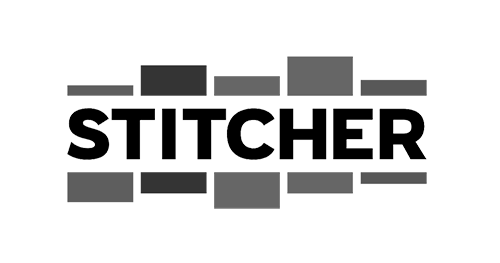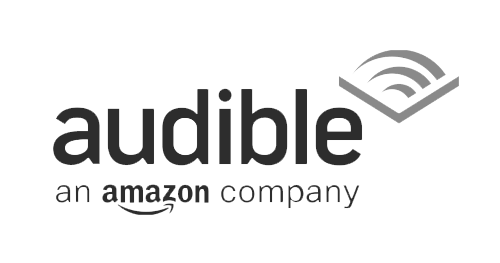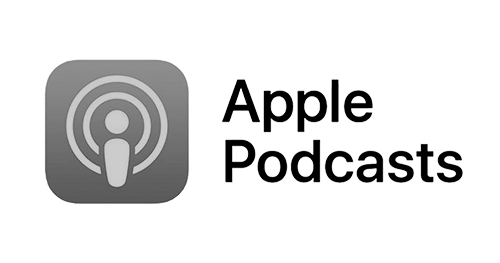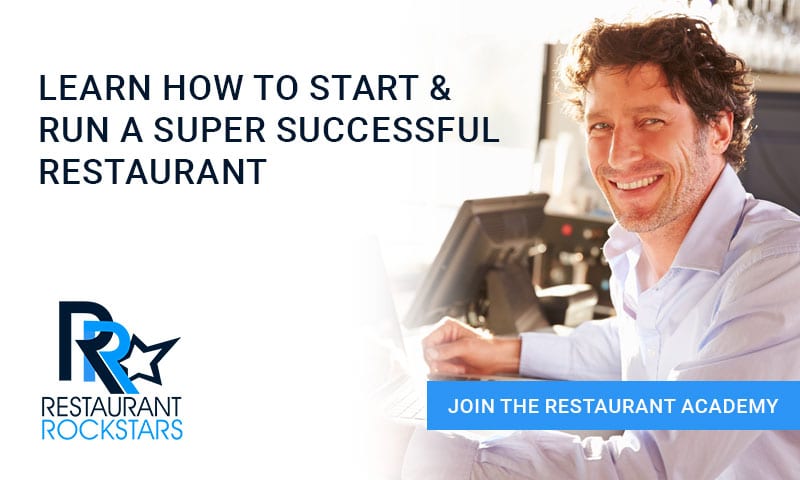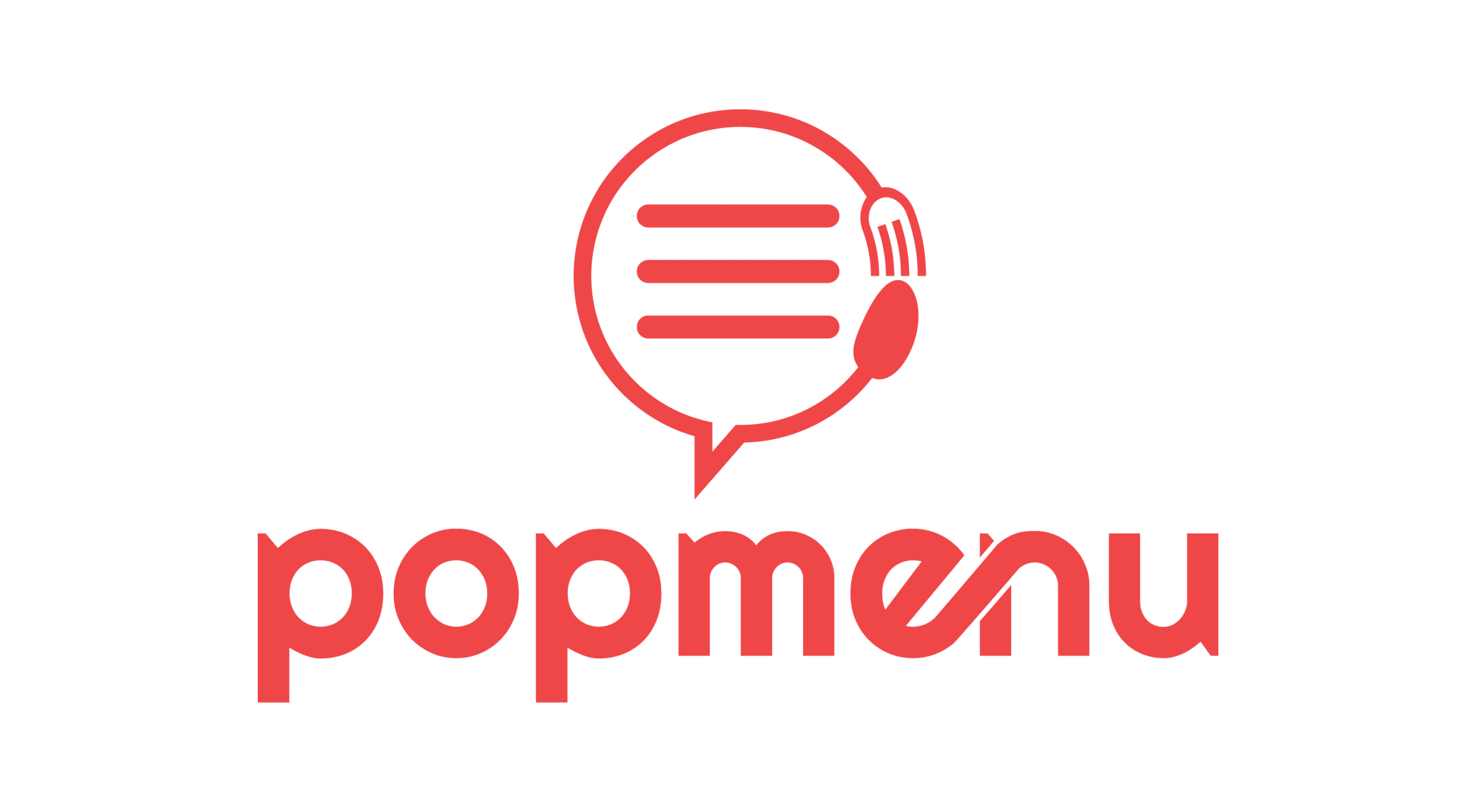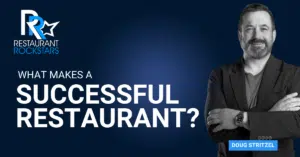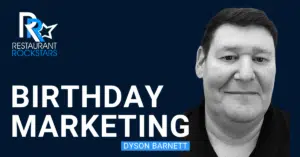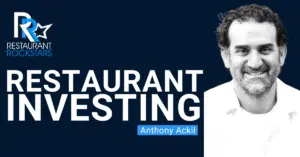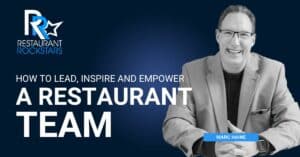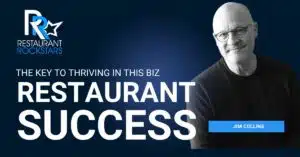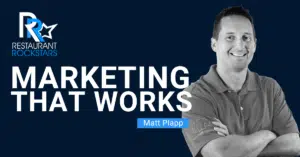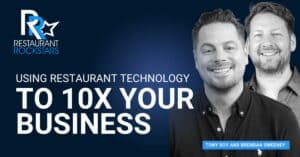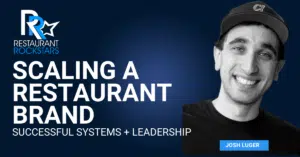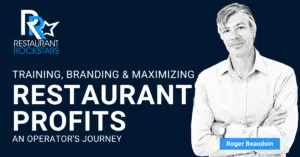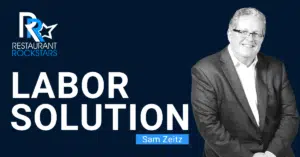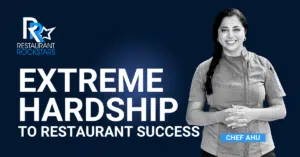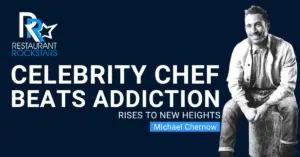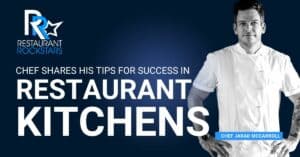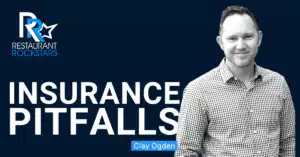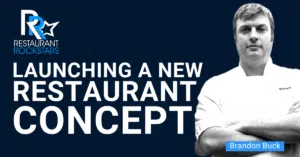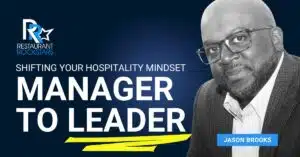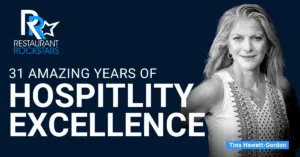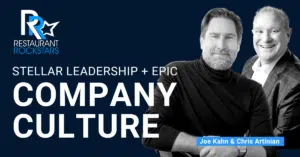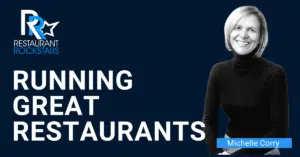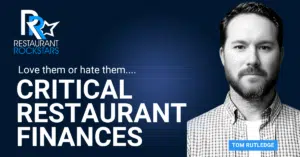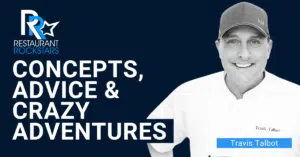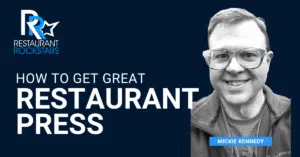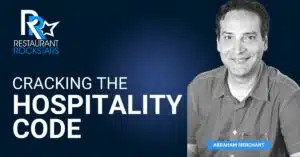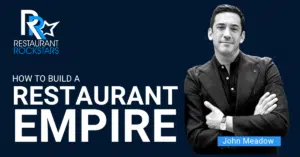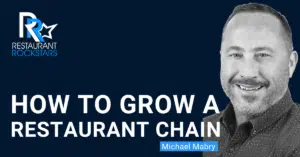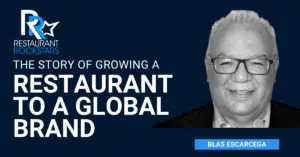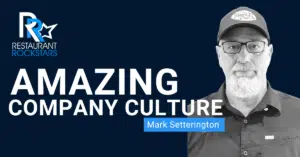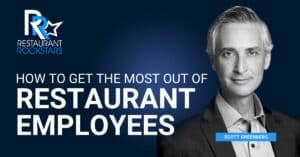Restaurant Rockstars Episode #314
How to Simplify Your Restaurant Accounts Payable
LISTEN HERE OR ON YOUR FAVORITE PODCAST PLAYER
Click the video below.
You’ve got a thousand details on your plate and more important things to do than worry about your Accounts Payable.
Yeah, I know it’s gotta be done, but it doesn’t have to be so complicated!
Imagine a world in that your accounts payable is completely automated and you no longer must take the invoice, pay it, enter it into your accounts payable system and then throw it into your already overflowing file cabinet.
This technology is now available, I was stoked to learn about it, and I think you will be too. This accounts payable system is almost like a fully automated, paperless filing cabinet.
In this episode of the Restaurant Rockstars Podcast, I’m speaking with Barrett Boston, the CEO of Plate IQ.
Listen as Barrett tells us:
- How you can stop paying your accounts payable the old-fashioned way
- The way to eliminate paper invoices, paper checks and old-school data entry
- The simplicity and efficiency of a remotely accessed accounts payable system
- How you can pay 180,000 in-system vendors through ACH, your “Plate IQ Card” or regular credit card to gain points
- About Full integration with Quickbooks and other accounting software
- Getting cash back from paying vendors early or on-time
And, of course, how the on-boarding is quick and easy and the client support stellar.
If you’re interested in taking your accounts payable to the next level so you can focus more on pleasing your guest, PlateIQ has a free consult at www.plateiq.com
Watch or Listen to this episode, dial in your systems, and then go out there and Rock YOUR Restaurant!
Roger
Connect with our guest:
https://www.linkedin.com/company/plateiq
https://www.facebook.com/plateiq
https://www.instagram.com/plate_iq
0:00
Getting these invoices into your general ledger and accounting system and then turning around and paying those vendors. All that tends to be a fairly labor intensive process and something that just takes a lot of your time over the course of a month. And that is time that time and resource and energy that you’d rather apply toward serving your customers if you’re a restaurant.
0:23
Hey there, welcome back to the restaurant rockstars podcast. Thanks for joining me, I can tell you that for many, many years, I paid bills the old fashioned way, and it wasn’t a lot of fun and you have more important things to do. And there’s new technology all the time. So in this week’s episode, I’m very pleased to introduce you to an automated Accounts Payable platform called plate IQ. They also call it the digital paperless filing cabinet, because you no longer need paper. Everything is automated from your invoicing to your data entry to your filing and literally it’s all right here or remote. So you’re not gonna want to miss this episode. Glad to bring it to you. It’s something new that will improve your business. Don’t miss it.
1:07
You’re tuned in to the restaurant rockstars podcast powerful ideas to rock your restaurant. Here’s your host Roger Beaudoin.
1:21
Not answering your phone is one of the quickest ways for your restaurant to lose a potential customer. But between serving in person customers and dealing with the kitchen, it’s hard for staff to prioritize incoming calls. That’s why your restaurant needs pop menu answering simple questions to keep your phone line tied up can be handled without pulling a staff person from your in person hospitality. Reclaim the power of your phone. Popmenu answering is powered by artificial intelligence to answer the simple questions most people call in with like, do you have outdoor seating or what are your hours within the pop menu platform you can customize answers for your restaurant and choose the voice your guests here. Plus create customized greetings. Popmenu answering picks up your phone 24/7 365 days a year turning every phone call into an opportunity. Plus popmenus full collection of tools helps optimize your restaurants website and menu streamlines your ordering experience and assist in retargeting to enable you to build long lasting relationships with your guests. Get help answering your restaurants calls now with pot menu answering. And for a limited time my listeners can get $100 off their first month plus an unchanging monthly rate at popmenu.com/rockstars Go now to get $100 off your first month at popmenu.com/rockstars.
2:47
Listen, I’m all about marketing. But believe me very few marketing ideas today are fully trackable where you know exactly where the business is coming from. And you also know that it’s generating a positive return on your investment. Now I no longer own restaurants. But if I did this idea would be at the very top of my marketing plan. It’s all about birthdays. Everyone has a birthday and they are a huge Let me repeat that huge source of business in your restaurant. Why wouldn’t you want to focus in on reaching everyone with a birthday in your area? Well, you can with the birthday club from fan Connect. Best part is they do everything for you. You get a turnkey marketing system that sends birthday cards in advance, inviting people to celebrate your restaurant from your area code plus a signup strategy for your existing customers. New business repeat business hire check averages and a massive customer database. You can get all this with the birthday club. Check it out and sign up now at get fanconnect.com/birthdayRockstar.
3:57
Welcome back everyone. This is the restaurant rockstars podcast. We appreciate our audience being with us with me today Mr. Barrett Boston. And he’s the CEO of a platform called plate IQ which automates your accounts payable. Now we all know that Accounts Payable is one detail in 1000. It’s not a lot of fun. It’s something you’d rather not focusing on. So this software literally automates the entire process and frees you up to do what’s really important in your operation. So welcome to the show. Barrett. I’m glad to have you here.
4:28
Roger, thanks so much for having me today. It’s a pleasure. Thanks for bringing me on to the podcast.
4:32
Well, this is really interesting because my audience knows I ran restaurants for over 20 years. And for many of those years, I did this process manually until I had an office manager that then did things manually put that goes back in time and now it’s a whole new obviously century of technology. And we want to get all into how this works and what it does. But before I do, let me ask you do you have a hospitality backstory ever work in a restaurant? It’s like How did you end up at plate IQ and just tell us the whole story.
5:03
I wouldn’t say I have a long backstory in hospitality. Although I did have one early experience in college working as the bouncer at a Hard Rock Cafe for a time. That was my, that was my entree and experience into, you know very much Front of House and in a restaurant. But since then, over the course of my career, which has been all in technology, I have spent a lot of my career applying technology to solving business problems. And much of that has been in the hospitality space. For example, I was president of a company called travelclick, which is in the hotel, hospitality space, clearly food and beverage aspects of hotels. But much of my career, I’ve been passionate about applying technology to solve business problems in industries such as restaurants, hospitality in general that perhaps haven’t leveraged technology historically.
6:01
That’s, that’s great. I mean, technology is literally where it’s at. And technology is moving forward at lightspeed. And it seems like every day, there’s something new. But it’s really been, you know, tested. And I want to ask you all about how this product was tested with your clients and all that. But before we get to that, let’s shift gears for a moment. Before we get into what plate IQ is all about. Let’s talk about what you do. If you have any free time, you’re obviously a busy guy. You’re the CEO of a leading platform, but what are your passions outside of work?
6:33
Outside of work, it’s really about our three boys. So they are very active. We live in California, we’re outside a lot. And we are all passionate about mountain biking. And I would say Roger, it’s specifically downhill mountain biking, where you put on the full body armor and launch yourself down the mountain. No, and it’s, it’s a high adrenaline type thing that comes with having three boys in the family. But that’s our main passion and outside of work. Other than that, my weekends are mostly occupied by on the sidelines of soccer games and lacrosse, games and such.
7:09
Well, I’ve been a huge mountain biker for over 25 years myself, I used to be a road bike. I lived in California, in Los Angeles, and I used to ride my road bike up the Pacific Coast Highway up into the hills of Malibu and go on these 30 mile rides. And that was fun. But then as soon as I moved back east mountain biking was the thing. And I’m a cross country guy. And I’m getting a little old for that downhill stuff launching off tabletops. I’m way beyond that now. But I still ride five days a week. So that’s really cool.
7:37
Oh, yeah. And we just started on the east coast. So we started in Vermont mountain biking when we live there, but I’m where are we in? We were in northern Vermont up around the Stowe area. And yeah, all across northern Vermont. Yep, yep. A great place to get started. But I’m with you. I’m mostly leaving the big jobs to my kids.
7:57
That’s still really cool that you share that with the boys. So thanks. Thanks for sharing that. Let’s talk about the founding of plate IQ. What’s the backstory of plate IQ? When was it founded? What’s the story behind that and what was really the brainchild that led to the development of the platform and the company itself?
8:12
Well, plate IQ was founded by two founders in 2014. It was Baba Cole and Ron Jayaraman, who remain on the board have played IQ today. And I can tell you a bit more about that. But what they were looking to do was to solve business problems on behalf of small businesses. And they, they as is often the case with an early stage company, they actually started with a different idea that morphed eventually into the idea that became plate IQ as we know it today. But But what Babak and ROM were passionate about was applying technology to solve business problems in the back office of small businesses. And like I said, they quickly came around to the idea of solving back office business challenges for restaurants. And they went through the Y Combinator program, early early source of funding, and in 2014. And the first revenue really was just performing accounting work for restaurants. So that provided the first early revenue as they built the technology component of the business. But the rest is history. As they say over over the last eight years. The team has been working to build this great technology that we have today. Serving 1000s of customers.
9:36
That is awesome. So were you recruited Barrett or how long have you been with the company and how did they find you or you find them and tell us about that journey?
9:45
That’s right so I’ve been on board for one year now and it really coincided with the investment by FTV Capital in played IQ and Baba can rom decided that they wanted to bring in a new leadership team to help lead the company to through the next phase of growth. And so I already knew FTV Capital, I knew that they were a great sponsor group, particularly in FinTech, FinTech and payments in particular. So they have a lot of expertise in the space, they have a tremendous network in this space. So I knew that they were a great fit to partner with, in this situation with played IQ. So when I met Baba, Ken ROM, and I saw how passionate they were about this, I saw how committed they were about staying involved with the business, I saw how great the technology was the core technology, which we can talk about, I also became very passionate about the opportunity. And to make a long story short FTV and I both came on board at the same time about one year ago today. And it’s been a it’s been a great first year. And we’re well on our way to building that great company that Barack and ROM always had in mind.
10:58
Now I know that you’ve got many, many significant amount of restaurant clients, and obviously, we’re concerned about that for our audience. But you serve other industries as well. And you did mention hotel hospitality, which we have a hotel audience, also. But yeah, other industries, like obviously accounts payable, every industry on the planet needs accounts payable.
11:19
It’s true, you’re right, the fundamental business challenge, as it turns out, tends to be common across industries where you’re trying to ingest that great volume and speed, you’re trying to ingest invoice data into your general ledger accounting system. Now, it happens to be a very complex problem, as you know, Roger, from operating restaurants, in the restaurant business, it tends to be very, very complex. So the idea here is if you can do it for restaurants, you can do it for basically any industry. But you’re right, today, we have a lot of hotel clients. And it’s often particularly the food and beverage aspect of a hotel that leads to this need because of that complexity again. But we also have Country Club clients, we’re in retail and distribution, we one of our larger clients happens to be a NAPA Auto parts distributor, our largest clients, actually Roger, our largest client today is a grocery chain. So we’re in the grocery business, retail distribution and quickly getting into others. But our core always was and always will be restaurants and hospitality. And again, it’s because of that complexity is because of the value we can add to that business problem. And so I think that will always be at the core of what we do.
12:40
Excellent. That really gives me a really good picture of what’s happening here. Let’s talk about, well, we were focused, obviously, on restaurants. And obviously, when you go into any new industry, there are certain nuances to the way the business operates. But let’s focus on restaurants for a moment when you first started focusing on the restaurant Accounts Payable challenge. Tell us about the beta testing, did it go live in a number of restaurants and those restaurants that were significant would give you feedback that said, you know, this is what we need? And this is what’s happening? And can you fix that? And can you give us this feature that feature like it came together? Either because you had restaurant owner operators on the team, or you got that specific feedback from people in the field that were testing the product? Can you speak to that?
13:26
Well, you’re absolutely right. So we were fortunate enough in the very early days to have some restaurants and restaurant groups who were willing to work with us. Now in some cases, some of those were also investors in the company. But for the most part, it was just people who were passionate about solving the problems that could be solved through technology. And and so you have a bunch of like minded people who came together who are interested in solving this business challenge. And so they were willing to give us their problems, so to speak, and their data for us to tackle in the early days. And that’s really all you can ask for as a as an early stage company. And I think that our founders would tell you that it wasn’t always smooth in the early days. There’s a lot of learning that happens on those on those early customer situations and and and those are still our customers today. Almost each and every one. So that says a lot about the early days of the company and what we were able to do even through that rocky period of just formulating the technology, but the other thing that you need in a business such as this, which is driven through artificial intelligence, which we can get into in a bit is you need volume to throw at the problem because of course you need to train the system to handle different situations. And the best way to do that is by throwing a lot of volume and a lot of data at the software at the technology And so that requires time. And it requires lots and lots of restaurants participating so that your system can learn and be trained how to handle different situation and nuances to improve the level of automation, of invoice ingestion over time. So we were very fortunate to have a lot of people in the restaurant industry who were eager to help be a part of this, what I’ll call movement, to embrace and adopt technology to solve these business challenges in the back office.
15:31
Yeah, and I guess for the most part, just from my own experience, these are recurring transactions that happened over and over again, with the same vendors. And then every once in a while you bring in a new vendor, but the way things are classified into your GL system is through, you know, the certain Chart of Accounts and the classifications, whether it’s cost of goods, food, cost of goods, beverage, labor, I mean, the GNA, expenses, all that kind of stuff, over time, it stays relatively, you know, fixed and solid. And every once in a while, you’ll throw a new one in there. But that’s the artificial intelligence that recognizes those transactions over and over again. So we’ll talk about that in a few minutes. Let’s talk about the typical process of onboarding this, because now you’ve got our attention. It’s like this is going to free up so much time and just make things so much more productive. It’s really a system, you know, and I’m a huge believer in restaurant systems. So if you would please just walk us through a brand new client, and what’s the process like and what’s it take to get up to speed? And what do I have to do to give you the information? versus what is done for me? Do I have a dedicated account representative that, you know, takes care of all my pain points while I’m getting up to speed in this talk? Yeah, absolutely.
16:44
So that if you would, I will. And as part of that, I’ll also paint a picture of what the situation might look like that we typically would walk into when we start with a restaurant. Yes, and it turns out that it’s a pretty straightforward process to onboard with plate IQ. But what we typically find when we walk into a restaurant and Roger, you’ll be familiar with this with your background, but it’s it’s typically a the process of getting these invoices into your general ledger and accounting system, and then turning around and paying those vendors all that tends to be a fairly labor intensive process. And something that just takes a lot of your time, over the course of a month. And that is time that time and resource and energy that you’d rather apply toward serving your customers if you’re a restaurant. Absolutely and, and so it’s typically a manual process. It’s a it’s a laborious process. And in restaurants, it can be a very tedious process, because there are a lot of line item details as you’re aware, if it’s a if it’s a higher end restaurant, you might have multiple types of tomatoes that go into different dishes. And so you have to be able to account for those you might have different if you’re a restaurant group, you might have expenses that need to get applied to different entities, different locations. So there’s a lot of detail in that invoice that has a lot of nuance about it that may even be difficult for a human to understand and know what to do with. So what that implies is that there’s a significant amount of workflow that goes into the decision making about how to handle the details of that invoice, and then how to handle the payments back to those vendors. So that’s, that’s the situation we typically encounter when you onboard with plate IQ. The interesting thing here is that our technology is able to handle invoices in any format. So it could be it could be a handwritten invoice from a farmers market, our technology can handle that. Or it could be a stack of invoices More typically, you might have 20 invoices that you want to process, you could scan them, you could upload them in a batch format to us in any format, it could be a batch upload to us in an email, for example is a typical way it gets across but it all could be EDI, so anything from handwritten notes to to electronic and our system can ingest that handle it parse it at a line item detail level which is very important for restaurants in particular, and and understand it in a highly automated fashion and in a highly accurate fashion based on the technology that we’ve built over the last eight years. And that’s what it does. And so it populates the data in your accounting system and your general ledger. And then the next step is to turn around and facilitate the payment back to those vendors. And so we handle that aspect of it as well. Whether it is in paper check format, whether it’s in a virtual card, credit card type format, or whether it’s in To ACH transaction, just about any modality of payment that you want to issue to your vendor, we handle that as well. So it’s the full round trip, ingesting that invoice through paying that vendor.
20:14
You know, that is really helpful detail because you struck on something that was a real pain point for me for a long, long time. And we worked with multiple vendors at certain times different categories of what we brought in for cost of goods, but let’s just use food as an example. Some of my higher volume places would get, you know, three or four invoices a week from a larger supplier, there might be five and six pages each. And literally, the items weren’t separated, you’d have food mixed in with beverage mixed in with operating supplies, like rubber gloves, and mop heads, and it would all be in there. And I remember in the early days in my restaurants, it would be I’d wrack my brain, like literally separating out to make sure I classified things correctly. So wouldn’t artificially skew my food and beverage costs because obviously, mop heads had nothing to do with food cost. And all. This is a pain point for some operators today. And I’m hearing that whether it’s a paper invoice from the farmers market down the street, or it’s literally one of the leading suppliers that give you a 10 page invoice, bang, it’s classified accurately and properly.
21:18
That’s absolutely right. So that you’re describing a classic problem that software is great at handling, if it has been trained properly to train to deal with all these different situations and nuances. And that’s where our eight years of experience and and and volume of data comes into play. We’ve seen probably just about every permutation you can imagine in your mouth heads and tomatoes example there. And so the ability to parse among those and separate those out and categorize them is is what the software is all about. And so that’s exactly what we do. And there are others out there who purport to do something similar. But whether you’re talking about invoice ingestion or handling expenses. The secret in the industry is that a lot of times that’s not really technology that’s handling that it’s it’s humans who are doing that. And it’s sort of masquerading as technology. That’s not what we do. This is very much artificial intelligence driven software that is able to understand the data that it’s being fed, categorize it, parse it, get it classified properly into your accounting system. That’s exactly what we do.
22:37
And the basic definition of artificial intelligence is automated system that recognizes recurring transactions and knows instantly where it should go and how to classify everything correctly. And I’m sure it goes far beyond that. But that’s the basic premise behind it. Right? For those that don’t really work with AI. Yeah, I
22:56
like your definition, I’m going to start using that. Now. I think that’s a pretty good definition of artificial intelligence, I think it, it obviously starts with human intelligence. So you’ve got to train the technology. But you’re right, artificial intelligence is something that one of the hallmarks of it is that you are throwing volume at this problem on a repeated basis, so that you train it to handle different situations. And that’s exactly what we’ve done now. So what you would typically do, and in a task such as this is, you might start with off the shelf, OCR technology, which is just optical scanning technology. And that’s exactly what we do. But the intelligence is what you build on top of the scanning technology, because anybody can scan a document, but you haven’t understood it once you’ve scanned it, and you’re not able to parse it at a very granular line item detail level. So the intelligence is in the is built into the the AI aspect of the system, and also the workflows to be able to understand what to do with the data now that you’ve understood it, thanks to the AI.
24:06
That’s a great explanation. And that really brings it to life for anyone listening. Let’s talk about the timeline. Again, let’s go let’s go into the typical client thing, because restaurants vary, we can have single independent locations that really want to take things to the next level. Maybe they’ve got 50 seats, maybe they got 150 seats, maybe this is a small chain that has, you know, three to five locations. Maybe it’s a Restaurant Group at multiple brands, concepts, locations in different regions of the country. Does it vary the onboarding, based on the complexity or the size of the operation?
24:44
Not too much. I would say that it varies a little bit based on the ERP system that you’re running and most customers that we work with are running one of the common ERP platforms, most of our customers are running restaurant 365 Or Oracle, NetSuite sage, QuickBooks Online QuickBooks Desktop, right? These are these are the major ERP platforms that you see in the restaurant and hospitality space and even beyond in the mid market, I would say. And so if you’re running one of these more common ERPs, that tends to accelerate the process, and it makes it for for an easier onboarding. But to answer your question about size of customer and complexity of customer, not really, it tends to be a pretty consistent process, regardless of the size of the customer, because we’re handling the exact same business problem across the board. This is a an onboarding process that typically would be measured in days, not weeks. Encouraging, because it’s relatively straightforward. And again, and there’s not a whole lot that you have to do on your end, as a customer to get ready for this, there’s a bit of training, I would say, for a larger group, there’s a bit of training for your people, that’s probably the biggest commitment on your part. But our technology is built to be able to, again, ingest the data in any format, you want to give it to us. So there’s not a lot of integration work, so to speak, that has to happen.
26:18
That’s good news. Excuse me, and you have a dedicated client representative that works with clients that stay with you to handle any tech challenges or support issues that might arise down the road.
26:30
We do we have an account management team. And this is something that we’ve put a lot of investment in in the last year since we did receive a major funding round a year ago. And so Customer Service and Support is one of those things that is an important attribute of any SAS Type technology company, and ours is no different. And we’ve invested quite a bit of resources in the account management and customer support functions. And the results are showing we tend to have a very, very high customer retention rate. Basically, the only time we lose a customer is if someone happens to go out of business. But other than that our customers tend to stay with us.
27:12
You know, I was amazed to learn that you’ve got 180,000 vendors in your network. And I can’t imagine with that many vendors being a restaurant not being able to instantly say oh, all my vendors are here. So that’s that’s a tremendous feature alone. But let’s talk about, you know, the payment because I understand this, there’s also cash back somehow, if you pay your invoices on time, let’s talk about all that.
27:39
Yeah, let’s talk about that. I will say just back on your vendor. questionnaire. So vendor enrollment is an important task that we do every day. So we’re, we’re enrolling anywhere from 500 to 1000 vendors a day sometimes, and so if if if your particular vendor is not in our network, part of our process is getting your vendor enrolled in our network so that you can we can process payments through them. So that’s an important part of of the company as well on cashback. So, not always, but this is sometimes an important consideration for our customers to generate cash as a part of the payment transaction to vendors. And so our customers are receiving cash back from us in a way that you would expect in in the in the card part of our business. So this relates to the virtual card aspect of our business. And it’s interesting, Roger, some customers are motivated by that. Some are not meaning that the primary motivation for doing all this that we’ve been talking about is to improve the timeliness and accuracy of the processing of data in the back office so that you can make adjustments in real time before that period is over. So you can make adjustments if you feel that something’s out of whack in your, in your in your beverage area, for example. But I would say cashback can be an important part of the value proposition. And so that’s simply where we share in the economics in these payment transactions in a way that’s typical in in credit card payment processing.
29:23
Yeah, I mean, it was always important for us one, we ran multiple seasonal operations, and every dime counted, of course, and cash flow is super important. And also, you know, in a in a low margin business where inflation and rising labor and food and beverage costs are going up beyond our control. It’s like you need every, you know, every tool in your toolbox to try to get that you know, bottom line impact going from wherever it comes from. So it’s good to know that there’s another option. Now let’s talk about payments because you mentioned the virtual cards. I want to talk about that but we also have ACH we’re obviously eliminating paper checks Next. And I think that’s tremendous. But let’s talk about what the virtual card is and how that works.
30:06
Sure. So the virtual card, what how that works is we’re creating just like it sounds a virtual card that you use to make a payment to a vendor. And so it’s not a physical card, it’s a virtual card as the name implies. And so it’s a very secure way to create a credit card transaction to a vendor. And so we’re doing this on a constant basis, setting up these cards for a single payment for a single vendor. You can even do this for expenses as well, it’s the new way to think about expense management, for example, if you wanted to. And what this implies is that you’re you could approve an expense in advance, let’s say it’s a conference, you could approve as a manager, a virtual card for an employee to go to a conference. And so that expense is approved up to a certain amount, let’s say, but the gist of these virtual cards is that it’s a highly secure way to make a discreet payment to a particular vendor. And it is becoming the norm the way that a customer wants to pay their vendor. Now, ACH is the other big important way, as you mentioned, yes. And this is also highly secure way. And many of the many of the larger vendors expect an ACH and prefer an ACH transaction. And so we handle that as well. You might be surprised at how prevalent check writing still is in the industry. And it’s going away, it declines every year. But there are very few customers that we come across who don’t have this somewhere in the mix. And so they’ll have one vendor, they have to pay that way or a handful, and so you have to be able to handle that as well. But I would say that you’re right, the virtual card method is the fastest growing among them. That’s great.
32:08
So when I ran my restaurants, I had a whole bank of file cabinets, you know, the biggest ones from floor to ceiling practically. And we had historical records that we had to keep for like seven years for the IRS and all that kind of stuff. And yes, that is the old school manual process. Let’s talk about I love the fact that you you consider this to be a paperless digital filing cabinet, which literally sums up, you know, my old school way versus what you know, is really productive and efficient. Let’s talk about Well, let’s talk about how that works. It’s like from start to finish. We’ve covered a lot of the process. We talked about payments, we talked about invoice we talked about integrations with QuickBooks and all of that. What about looking things up historically? I mean, it must be a lot faster than digging the old school file cabinet to find a past transaction, a past invoice, a disputed payment, whatever it is, how I mean, how easy is it to search something? And what do you just typed in a keyword somehow into this platform and it looks up anything you’re trying to find restaurant owners and managers.
33:12
I call this the business of 1000 details. And you’ve got more important things to worry about than calculating and paying your monthly sales tax on time. Well, that’s where Davo comes in. Davo puts sales tax on autopilot for restaurants. devil uses sales tax data from your point of sale system to set aside the exact amount of sales tax you collect every single day, and then files it and pays it when it’s due on time for your restaurant every month. Davo takes just five minutes to set up. And once it’s up and running, you never have to worry about paying sales tax again. Davo costs 4999 per POS connection per month, and your restaurant can try Davo for the first 30 days free. Davo was created by a successful restaurant chef and owner who knows what’s important for your operation. Time is money, and you’ve got more important things to focus on, like pleasing your guests. You can’t put a price on peace of mind. Why not try Davo for the first 30 days at Davosalestax.com.
34:12
Yeah, absolutely, it has the searchability that you would expect to have a platform like this. And if you think about this, Roger, when you were managing restaurants and groups of restaurants, I’m imagining that you had to be physically on site in in front of that file cabinet to be able to access something and to take action on it. So the fact that this is all digitized and online at your fingertips. You don’t have to be in any particular location. And that’s important today in a post COVID world and you don’t want to necessarily operate in that same office all the time. So you have the ability to do this remotely. I would say it’s also important in an environment where it’s is you know, better than anybody very, very challenging to find. Labor to find people to Do the work not just in the front of house, but in the back office as well. Absolutely. So having a digital platform allows you to if you, if you are moving from one employee who might leave to the next employee, it’s much easier to manage that transition with a digital based platform. And so it requires very little training to get that person up to speed. But there might be a whole lot more tribal knowledge involved in a file file cabinet system, for someone to find where things are. So I would say that those are two important benefits in addition to the big one, which you started off with, which is the search ability and just ease of use on a day to day basis as you perform these tasks.
35:47
And you can do this from any device, it’s could be iPhone, Android, it could be an iPad, it could be a desktop computer, literally, across the world, you can literally access any of your information. If you’ve got a management team on site running your restaurant, you just want to check on things and follow up. You mentioned the word remote, and
36:04
absolutely any site. So that’s that’s the beauty of a platform like this. You can be anywhere managing the business and performing tasks and making changes.
36:15
That’s awesome to know cash flow is super important in the restaurant business. And we also know that no money actually leaves your bank account until the vendor actually receives the money, which is another benefit, right?
36:28
Correct. Yeah, cash flow is important. And so you also want to have the option to make that payment, when you want to make it Now clearly, you’re held by the terms of payment to that vendor, right. But one of the features of our system is the ability to easily schedule payments and be able to make the payments on the on the timeframe that you want to make it and even to make partial payments, etc. So there, there are a lot of usability features built in that make life easier about making those payments that like you said, get at the heart of cash flow, and let’s play it face it. This is a thin margin business, we’re dealing with cashflow issues every day, high cost of goods sold. And so every little bit helps on that front.
37:19
So every operator listening to this knows that there are constantly people banging on our back door walking in on an unannounced no appointments. It’s like everyone’s trying to sell you something that you think that you don’t need. And as operators we become very quickly jaded. But if we’re opportunists, and if we hear something that sounds interesting, it’s obviously worth exploring further to then make an informed decision. So you’ve given people a lot of information today on something that frankly, I would have used if I still owned restaurants today, it’s all about systems and optimizing those systems and making your time more productive. Because time is money, you do offer a free consultation? And how do you take advantage of that you just go to the plate iq.com website and you can sort of get a demo or you speak to someone live on the phone that talks about your particular situation. Tell us about that?
38:10
Absolutely, it typically would start with a demo from someone on our sales team. But there’s a lot of word of mouth, you might be surprised, maybe not. But a lot of our customers come in by talking to others in the industry who have experience with us or another platform. But a lot of it is word of mouth. And it’s spreading, spreading very quickly. And I’ll tell you, Roger, I haven’t met anybody in the restaurant industry yet who comes to me and says, I’d love to spend more time and energy in the back office. And it just that doesn’t happen. And so anytime you have an opportunity to streamline processes in the back office so that you can spend more of your time and energy and resources focusing on what you actually want to be in the business of doing which is serving your customers, then that’s a good thing. And so we see a very rapid rate of adoption of this technology. Now, I will admit that the restaurant space hasn’t always been on the forefront of technology adoption, in some cases. Absolutely true. But this is one case where it’s a very it’s a it’s a discrete business problem, very clear cut the value proposition. And so we see very rapid adoption, anything from quick serve fast food restaurants all the way up to the highest end restaurants. It’s the same business challenge, and they’re all coming to plate IQ to help solve this problem.
39:37
Well, there’s certainly lots of credibility because you do have leading clients such as Thomas Keller’s restaurants, no one needs to introduce Thomas Keller and W hotels and Holiday Inn. I mean, that speaks volumes about the service you provide and the efficiency, the productivity and the pain points that are solved here. So I really appreciate it. Do you want to speak to the pricing model and how that works? Is it multi tiered? based on how many restaurants you have, or how does that work monthly recurring,
40:04
it is monthly recurring as you’d expect in, in a SAS Type technology business, it’s monthly recurring. And typically what we do is we have all three major products bundled in together, because we find that that’s how customers want to use the, the technology. And so that includes number one, invoice automation capabilities, number two, vendor payments, and number three expense management. And so typically, most customers would take advantage of all three, they would enroll in a in a license, that could be single year, it could be multi year, it’s a SAS license. Typically, if you’re a restaurant based on number of locations, so a SaaS fee per month for a number of locations, and it’s usually unlimited volume. So you don’t have to worry about hitting a certain threshold. That’s the newer way that we’re licensing customers. And we’ve gotten great feedback on that. So it’s a SaaS fee. And then on the transactional revenue piece, as we discussed earlier, there is a cash back sharing component in that. And so sometimes that cashback component, even offsets the sass fee itself. So this is when it becomes a complete no brainer. When you’re cashback and offset the sass fee you’re paying us for the technology itself. And so it becomes a free service for you to automate the back office. That’s that’s a beautiful thing when that happens.
41:35
Absolutely true. We’ve covered an awful lot of ground and bases today. Did we miss anything there anything else you want to talk about?
41:44
I think we covered it. I think that this is a classic case of a technology that can automate a labor intensive process. This is something that’s been ready for technology for a long, long time. The core problem, as you know, hasn’t changed since restaurants were started perhaps. And, and so it is ripe for technology. This isn’t one of those things where we have to wait a while to see if the technology really applies. It’s there. It’s been ready. It’s in its operating in primetime. And it is one of the easiest things that I know of to pick off for expense reduction for operational improvement. To to to to address the labor shortage that you see in the back office, all of those things. It’s one of the best value props that we know, of course, we’re a little biased. But we see it in the form of adoption every day.
42:47
Well, I think that came across crystal clear Barrett, you know this, one of the goals of our podcast, obviously, is to bring new technologies or best practices, you know, to the attention of our audience just to help them run a stronger, more productive and profitable business. And you certainly gave us a lot of information on doing just that. So thanks for being a great guest. Well, thanks so much, Roger. It’s been a pleasure. And thanks to our audience for tuning in. We hope everyone stays well. And we’ll see you all next time. Thanks so much Barrett, for joining us on the podcast and for bringing us plate IQ technology keeps moving forward at lightning speed and anything that can make a restaurant more efficient, more productive and more profitable is what we’re all about. So thanks again Barrett for sharing plate IQ with us. Thanks also to the sponsors of this week’s episode, pop menu, the birthday club by fan connect, serve the restaurant staff training app at SRV and ow.com and Davao can’t wait to see you next time. Don’t miss our next episode. See you then.
43:49
Imagine both your front and back of house teams are so well trained that they’re executing flawlessly. Your front of house is doubling your sales, boosting repeat business and creating five star dining experiences. While your back of house is consistently preparing each dish to perfection on time and to spec having a restaurant this dial takes a unique trading system. That’s where serve comes in. Serve means steady restaurant variety, and it is a powerful mobile training system custom built to meet the needs of your restaurant serve will uplevel your team’s knowledge and skills will maximize your profits and create experiences that guests will rave about. Picture this before the doors open for business. Susan, one of your managers is assigning serve training to Paul your new bartender. Using the app he will learn both food and beverage ingredients allergens, romance notes and pairings. She shows Paul how to use service interactive study tools to become a master of the menu and how to use the cocktail database to easily find suspects to make any drink. He can’t wait to hit the floor and sees how serve will unlock his hidden sales potential. Susan will be able to track his training progress and test his performance. I’ve got this poll says next, Susan just uploaded a brand new appetizer to the serve menu using the admin dashboard. Using serves menu profit tools. She’s determined that this new dish will have a major positive impact on the restaurants bottom line if the team is able to sell it. So she makes it a priority sale item and get your front of house team on board to suggest it throughout the night. Meanwhile, in the kitchen, Steve your line cook pulls out his phone and uses serve to see prep notes on the new appetizer offerings allow he says here are all the ingredients, the cooking steps and a photo of the plate presentation. This makes it so easy to learn this dish. Sally your server returns to her table with drinks and says, Man I now suggest you start with our new signature appetizer. It’s the perfect complement to the chef’s fantastic lobster special tonight, the pairs wonderfully with a bottle of White Haven Sauvignon Blanc. That sounds wonderful. The guest says we can’t wait to try it. Sally learned these suggestive sales by studying pairings unserved. Serve also allows you to uplevel your management team with a comprehensive restaurant academy that includes efficiencies, inventory management, cost controls, and maximizing profit, menu engineering, proven marketing solutions and more. Serve includes everything needed to develop your managers into rising stars in your operation. As the leader of your organization, you take pride in continuing to uplevel your operation and your team. You know that by investing in your people, jobs become careers, and everyone in your team feels empowered to perform at their best. As you can see, the possibilities with serve are endless. Serve is the key to unlocking your restaurants hidden potential, and more. The more your team is able to learn, the more your restaurant will earn it and it’s a game changer. Ready to SRV. Get started at SRVnow.com.
47:07
People go to restaurants for lots of reasons for fun celebration for family for lifestyle. What the customer doesn’t know is the 1000s of details it takes to run a great restaurant. This is a high risk high failed business. It’s hard to find great staff costs are rising and profits are disappearing. It’s a treacherous road and SMART operators need a professional guide. I’m Roger. I’ve started many highly successful high profit restaurants that I’ve now sold for millions of dollars. I’m passionate about helping other owners and managers not just succeed, but knock it out of the park. I created a game changing system and it’s filled with everything I’ve learned in over 20 years running super profitable super fun restaurants. Everything from creating high profit menu items and cost controls to staff training where your teams serve and sell to marketing hooks money maximizing tips and efficiencies across your operation. What does this mean to you more money to invest in your restaurant to hire a management team time freedom and peace of mind. You don’t just want to run a restaurant. You want to dominate your competition and create a lasting legacy. Join the academy and I’ll show you how it’s done.
48:23
Thanks for listening to the restaurant rockstars podcast for lots of great resources, head over to restaurant rockstars.com See you next time.
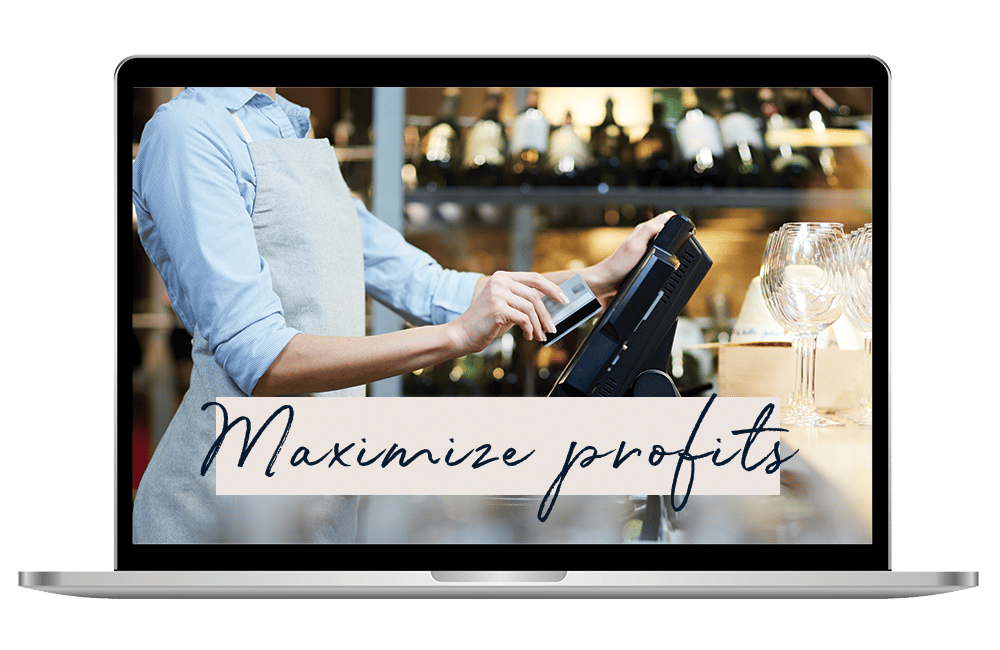
The three costly mistakes you could unknowingly be making?
Find out in this FREE guide and restaurant assessment specifically designed to reveal the unexpected hurdles standing between you and exponential business growth.
Thank You To Our Sponsors

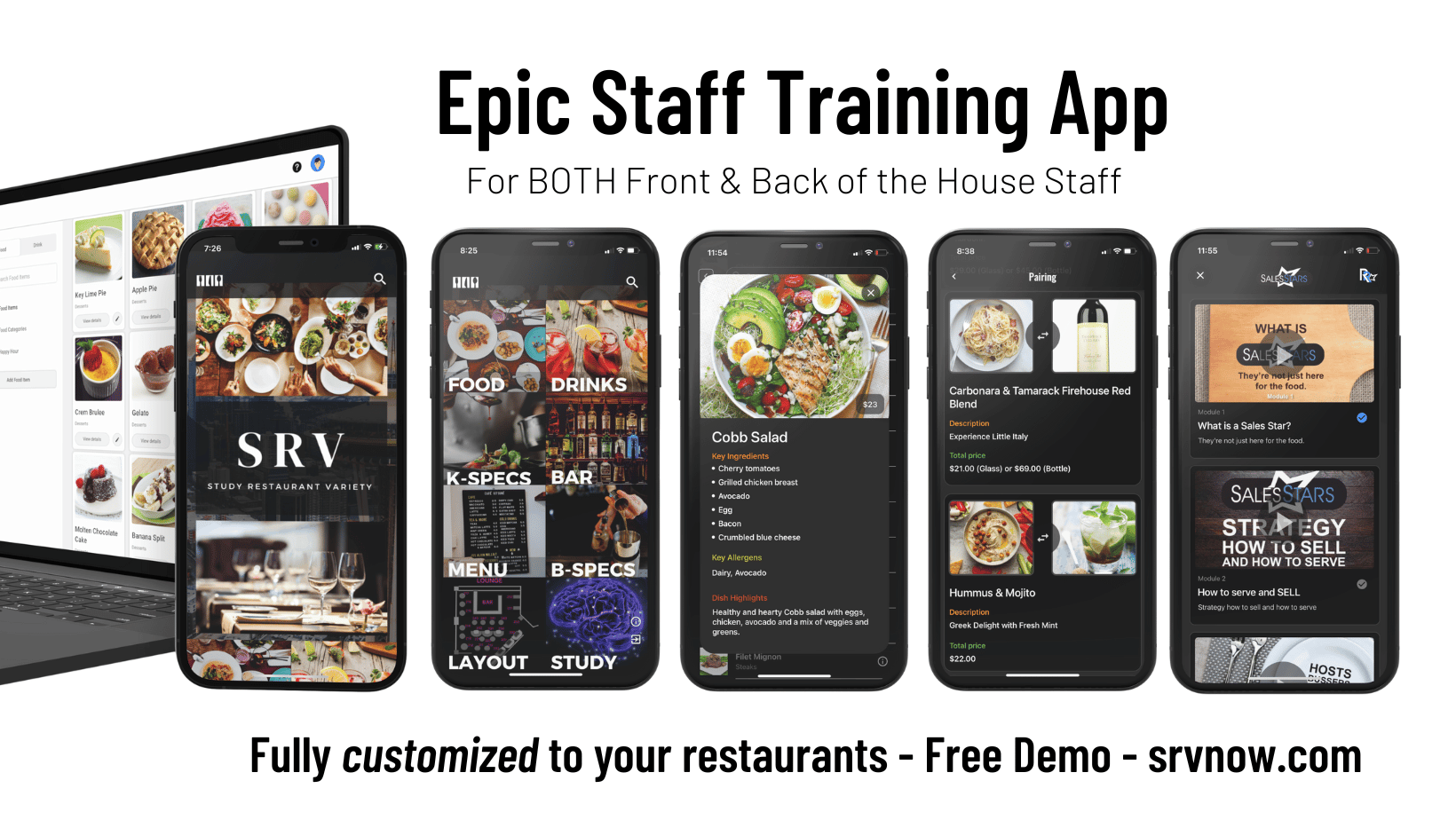
Unlock Staff Potential and Maximize Sales
For a limited time only, popmenu is offering our listeners $100 off your first month plus an unchanging lifetime rate.
Request a DEMO:
Want to become a podcast sponsor?
Please get in touch with Roger at roger@restaurantrockstars.com
